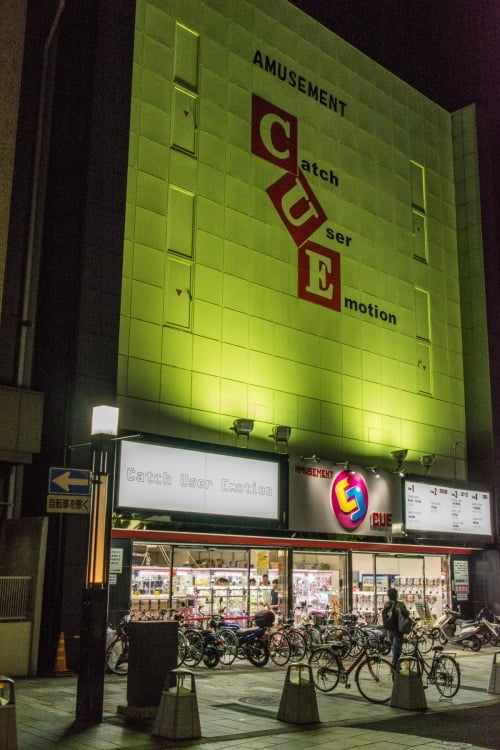
Our stay in Nara was spread over several days. We will focus here on our wanderings on the day of our arrival, having just arrived from Kyoto, as well as the few visits we made before reaching Osaka the day after. As I detail our main day in Nara and its temples in this article, I want to highlight here the visits we made outside the must-see places of Nara Park and the temples classified as UNESCO world heritage sites.
This article focuses on the historic district of Naramachi and its surroundings, a place marked by the commercial history of the Edo period, with alleys still sheltering a few traditional houses, museums, and discoveries made at random during our stroll.
First steps in Nara: around Mochiidonocho
It was late afternoon when we landed in Nara and the first task upon arrival was obviously to get to our hotel, the Guesthouse Nara Komachi (see the end of the article for details). The advantage of this establishment was that we didn't have to lug our luggage around for long since we arrived via JR Nara Station, only 350 m away.
The welcome was quiet and we quickly settled into our little cube that served as our room before setting off to explore the city a bit. Knowing the time, we didn't plan on going to see the temples, preferring just a quick look around the area and the path to take to get to the temple area.


Mochiidonocho Shopping Street
Our first stop took us along a thoroughfare, lined with a few nice shops and cafes, where the image of the deer is never far away. Arriving at a crossroads, we went into a pedestrian street, passing in front of a restaurant with a beautiful wooden facade and seeing that the thoroughfare in question is covered and commercial: Mochiidonocho.
From what I understand, it is one of the oldest shopping streets in Nara and was called the best shopping street in the prefecture during the Meiji era (1868-1912).

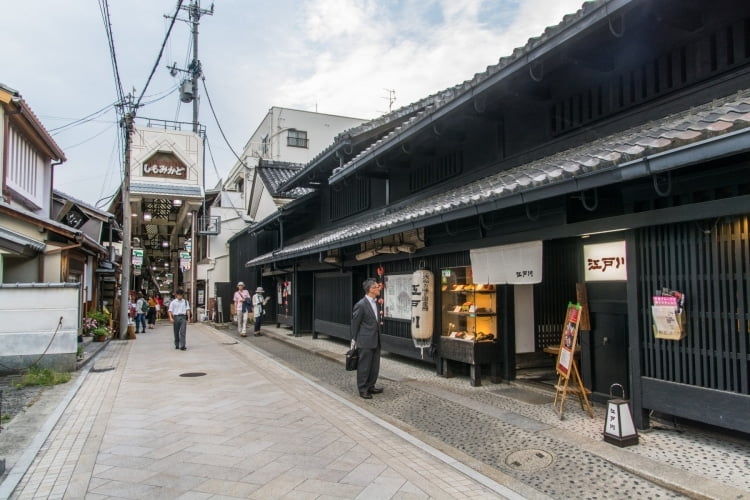
Just before passing under the alley in question, we stopped in front of a small shop of a local artist, with a cat theme, on hand-painted bags, clay statuettes and a few watercolor paintings. We were tempted to make some in the image of our dogs (sorry for the cats...)
In this case, the covered alley didn't really present anything interesting, it remained in our eyes only a shopping alley with a modern look so we quickly went to immerse ourselves in another small street instead.
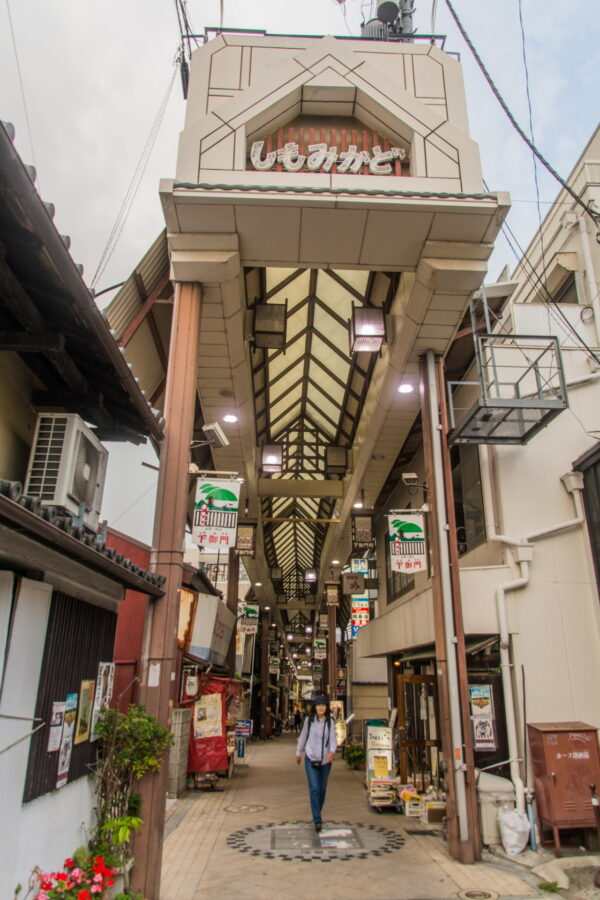
We won't go much further.
Further on, Jitima could not resist putting his head behind a cat sign, upon seeing him at the entrance of a shop and inviting passers-by to have his portrait taken.
Shop that sold lucky cats. Because if Nara is known for its deer roaming freely in the city center, cats are also omnipresent, due to the popularity of the famous Maneki Neko, the lucky cat.
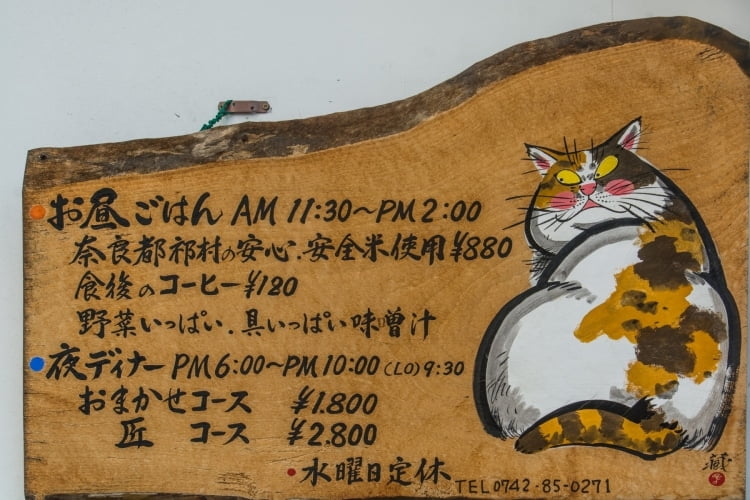




Sarusawa-ike pond
The goal of this walk, if not precise, took us to the small pond called Surasawa, located at the foot of the Kōfuku-ji temple (which we visited the next day). Following the quiet streets leading there, we passed in front of a small Shinto shrine, as one can often come across during walks in Japan.
Shortly after we arrived at the edge of the small water reservoir. In a canal below, I saw a sort of stone boat with statuettes placed on it. A place of worship, I imagine. I reflected that in Asia, religion and worship are often omnipresent, and that we end up hardly paying attention to them anymore…


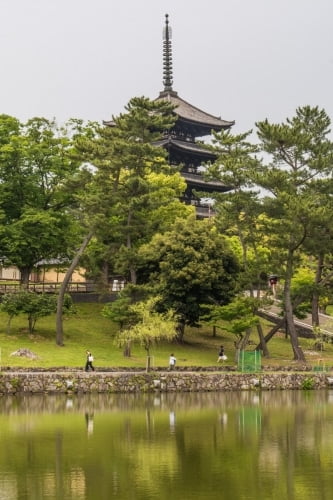
At the water's edge, a few people are picnicking on a bench. The view is not bad, the pond is surrounded by trees, with the small mountain in the background, which includes Mt. Wakakusa, a great place to get a good view of the temples of Nara.
On the side, we can see the 5-story pagoda of the complex of Kofuku-ji, while in one corner there is a stone with an inscription. The only downside to this whole thing is the sad, gray sky. This is also one of the reasons why I didn't want to visit temples. this late afternoon there, because in absolute terms, we would have time to see at least one (especially the Kofuku-ji, since he was at côté), but I preferred to have more favorable weather for photos (and luckily, the next day, the blue sky was there!).
Before returning to our hotel to rest a little, we strolled a little along Sanjo dori, the shopping street passing in front of the Kofuku-ji temple and next to the pond. There are souvenir shops there and especially quite a few restaurants, a good spot to remember to come back this evening.
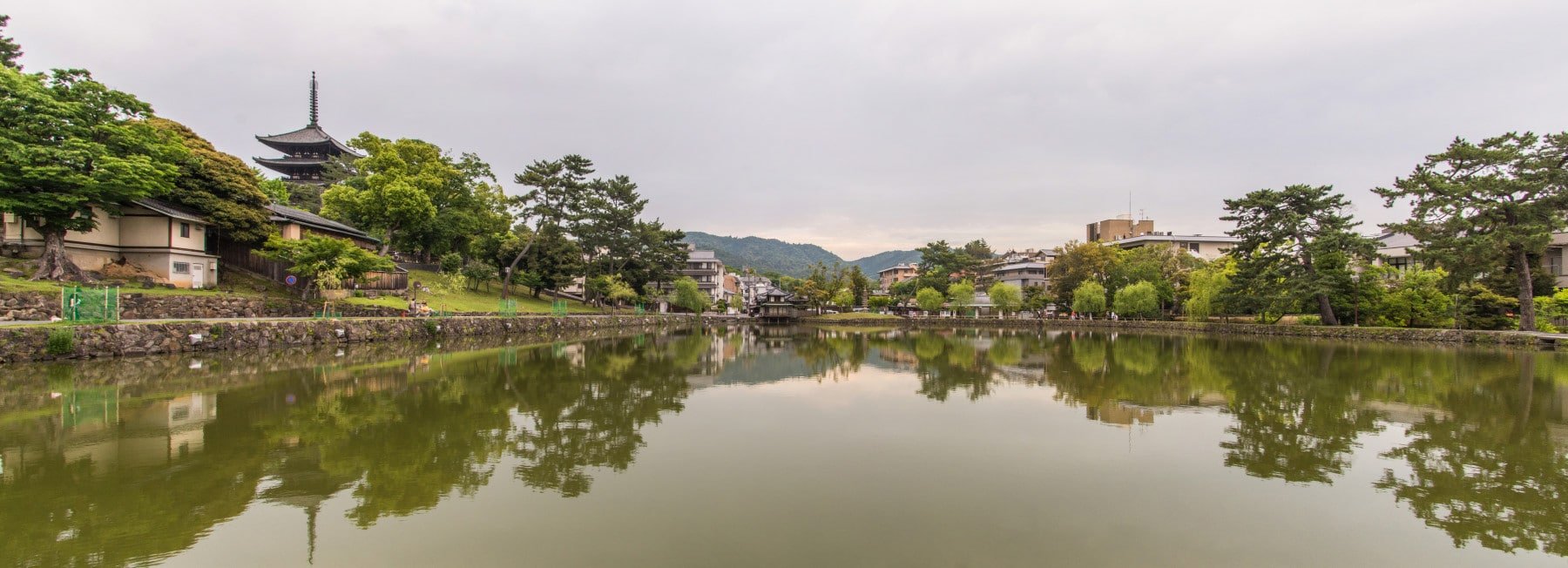
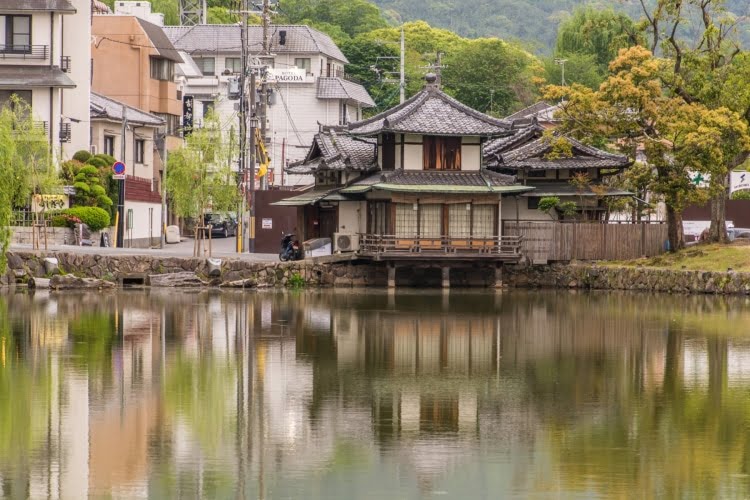
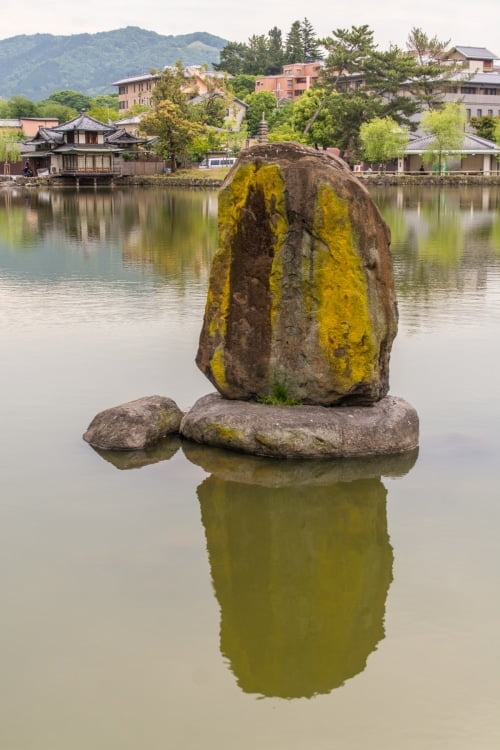
Amusement CUE Nara
After spending some time at the hotel, we returned to the same area.. After a while of hesitation, we tried one of the restaurants on Sanjo dori street, and since I'm not necessarily into taking food photos, well I have nothing to show you.
Once our bellies were full, we pushed our curiosity to enter a games room, soberly called Amusement CUE Nara (CUE stands for Catch User Emotion, which can be roughly translated as "Capture User Emotion").
There you will find the famous fairground machines with hooks to try to catch figurines, stuffed animals and other things according to your preferences. Machines known for their addictive side despite the “value” of the stake, CUE, we tell you. The building is spread over several floors, and my eyes widen with stars when I see a Mario Kart arcade, which “rocked” my youth. There is also a train simulator and slot machines. (like the ones at funfairs too, not the ones at casinos).
Personally, I was very tempted by a few miles... and if I held back, we ended up hanging around here for almost half an hour!


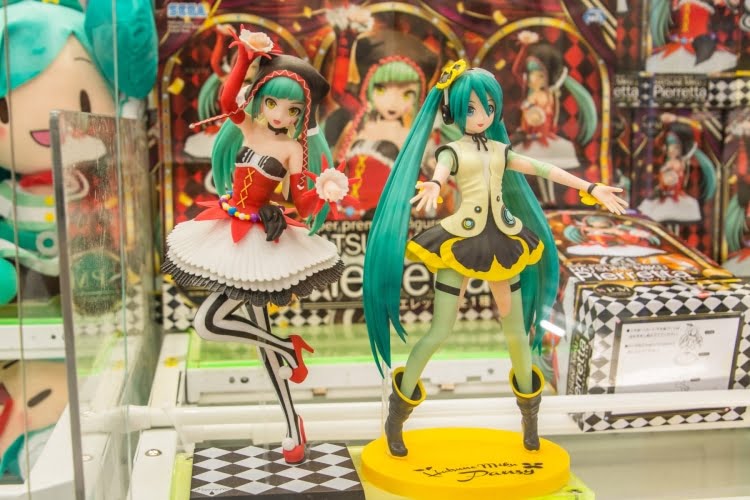
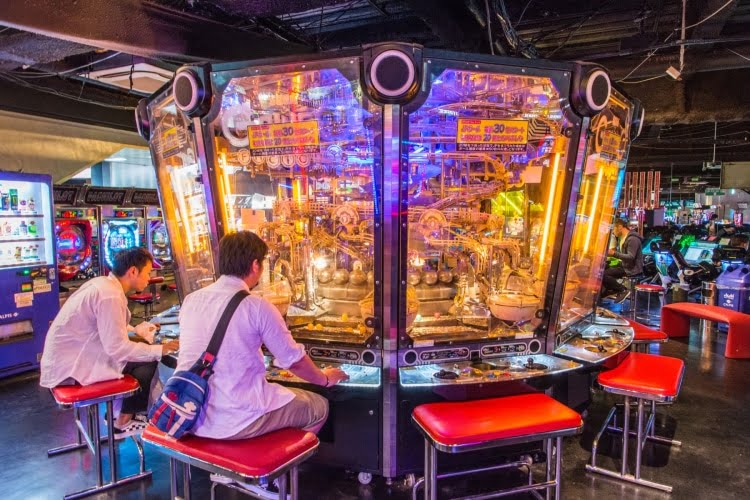

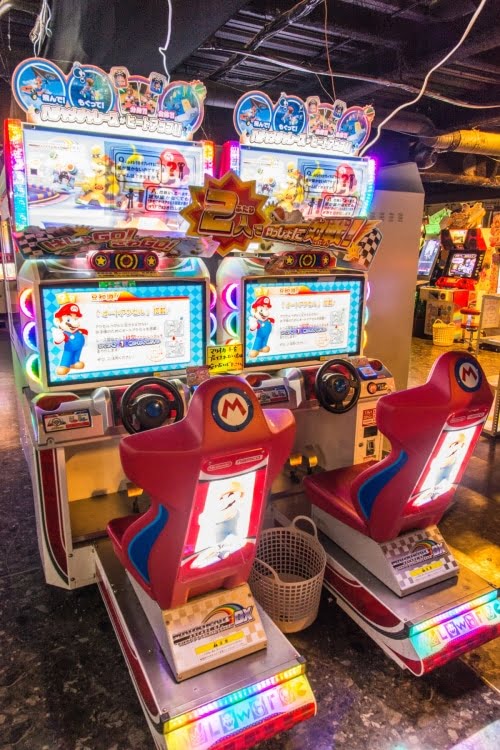
Last steps in Naramachi
We take a little leap in time and here we are on the last day in Nara, after spending two nights there. The weather was not great again, which did not make me want to complete our visits from the day before. I particularly wanted to see the Kasuga-taisha sanctuary, which seems photogenic to me with its rows of stone lanterns and surrounded by the forest (but I repeat myself, a gray sky for photos and the light… it's blah).
So, change of plan. Time (duration this time) missing, because then we need join Osaka, our last step (and point of arrival and therefore of departure), and that we only have this day and a few hours the next day to visit. So we decide that day to get up early and head out into the streets of what is considered the "old town". Since we can only afford a few quick visits close to our hotel, this is a good compromise.
Gangō-ji
And we started with a once important temple, the Gangō-ji, located 300 m south of the pond where we were the first day. This temple is one of a handful in Japan that still preserves architecture from the Nara period. (which lasted from 710 to 794). De This fact is part of it of yourself Historic monuments of ancient Nara listed as UNESCO World Heritage Sites. The original temple was founded as early as the end of the 6th century, but in the region ofAsuka, 30 km south of present-day Nara. Appointed Hōkō-ji, local residents simply called it Asuka-dera instead, hence a temple of this name still visible at the original location at Asuka.
The temple remained in Asuka until 718, when it was moved to its current location after the capital was moved from Fujiwara to Heijō-kyō (the former name of Nara). During the Nara period, Gangō-ji was one of the seven preeminent temples of the capital and thus the country, expanding considerably. At its "heyday," it occupied nine city blocks, each block measuring about 120 meters on a side, in a 3x3 layout, roughly a 360 by 360 m square, or an area of nearly 16 hectares.
It is difficult to imagine all this when visiting what remains, as the temple was diminished by periodic fires (unfortunately common in Japan). Currently, the only structures that survive from the Nara period are the Hondo (本堂, main hall) and the Zenshitsu (Zen hall), as well as a 5,5-meter miniature pagoda. And even these two structures were both heavily remodeled from older structures in 1244, during the Kamakura period (1185-1333).
It's all well and good, all these explanations wikipedia, but in the end, what does it give? And this is the most terrible… Not big thing… In fact, there was a certain boredom towards the temples. (as a reminder, we are at the end of the stay) and also, seeing that there is an entrance fee, it put us off a bit (even if it is cheap, 500 yen, or 4 €). So we just took a look at the courtyard from the entrance and left...
I want to say that in doing so, I learned while writing the article, we were missing an important cultural treasure in its main hall – the latter still containing the Great Buddha of Asuka-dera, the oldest Buddha statue in Japan (traditionally attributed to Kuratsukuri no Tori, in the year 606).
Naramachi Koshi-no-ie
The little explanation concerning the “blocks” of the temple Gangō-ji, take on its full meaning here, because Naramachi (which can be translated as Nara city) was an old shopping district of Nara, which is about 350 m from the Gangō-ji. Before its development into a merchant quarter around the 15th century, the area that is today Naramachi was occupied almost entirely by the once spacious grounds of the temple complex Gangō-ji.
Today there are several traditional residential buildings and warehouses, preserved and open to the public as small museums. Many buildings of Naramachi at the time ofEdo were what are called " machiyas", From long and narrow " townhouses " or town houses in good French, that is to say which served both as stores and as accommodation for local merchants.
Their peculiarity being that the shop fronts were often narrow in order to save on taxes, which were previously calculated on a property's street access rather than its total area. Today, a handful of machiyas have been preserved or reconstructed and sometimes opened to the public.
This is one of them, listed under the name "Naramachi Koshi-no-ie" under Google Maps, which we visited as we passed by. Although this house is not period, it is an exact replica of a traditional townhouse and one of the few you can visit to see how people lived in the city back then. Edo. Managed by the local council, Naramachi Koshi-no-Ie (read ie for the last word and not THE), also known as Latex House or Lattice House in French, has the advantage of being free!
To my surprise, inside there was a small booklet with explanations in French. Useful for understanding what surrounds us. Suddenly, I understood the name and the reference to the "trellis". Indeed, the "koshis" are trellises with wooden slats covering the windows of the facade, allowing like a one-way window, to see outside, without being able to see inside.
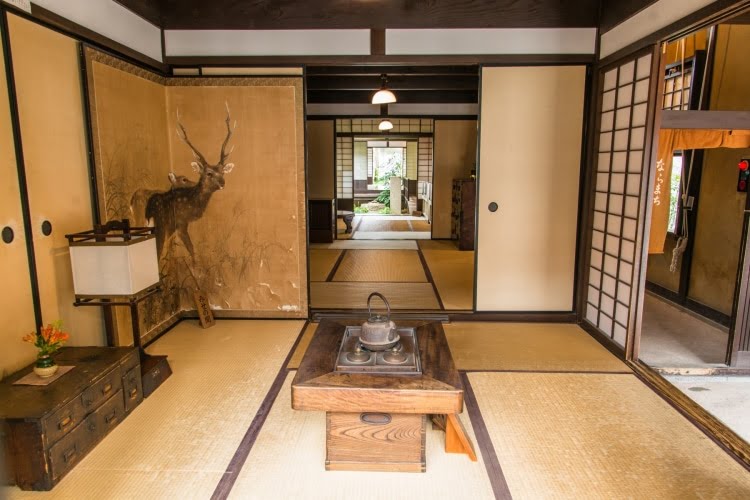

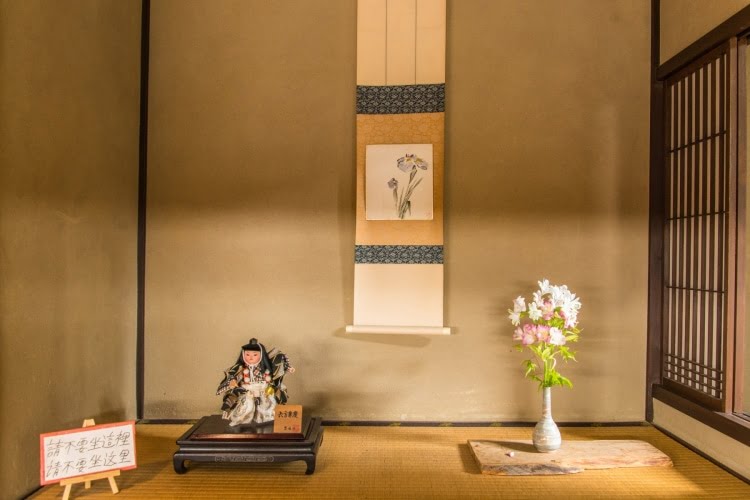
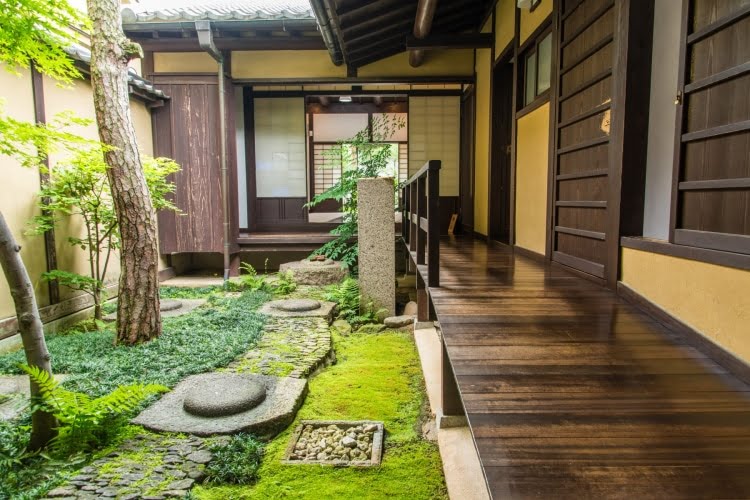



In the other explanations and according to the plan, we had:
1. The famous interior gardenCalled naka-niwa, literally bridges the gap between the main house, a detached room (called hanare) and a storage room (kura) at the back. All of which provide access to the bathroom and toilet.
2. The nested staircaseCalled hako-kaidan, designed to save space, drawers were built into it to provide additional storage space.
3. A raised part of the roof (a vent, called kemuri-nuki) was used to evacuate smoke from the hearth (kamado).
4. The skylight (akari-tori) was used to ventilate the kitchen by letting air circulate, while allowing natural light to enter.

And that concluded this visit, admittedly a bit express, to Nara. It was time for us to continue our stay by returning to our hotel to proceed with the check out and take a train to Osaka, the last stop on this first trip to Japan (and the only one to date, but I don't think it will be the only one!)
Getting to Nara from Kyoto
It was precisely from the Fushimi Inari sanctuary south of Kyoto that we went to Nara. In fact, we had visited the sanctuary that day since it was located on the line going to Nara.
As explained in the article on the shrine with a thousand torii, we had taken the JR train on the Nara line from Kyoto station. Arriving at Inari station a few stops further, we had left our luggage, which we had with us, in a luggage locker (outside the station, because the latter were all full).
After our visit to Fushimi Inari, we collected our luggage and took the train back to Nara from the same station, convenient.
If I detail a little, you have concretely two lines to go to Nara from Kyoto:
Where to stay in Nara?
Most visitors opt for a day trip from Kyoto. However, if you plan to continue your trip without returning to Kyoto, spending a night in Nara is still a great option. The city offers several accommodation options to suit all budgets. To discover our hotel in Nara and our impressions, go below:
In addition, I leave you a search widget in the form of a map, very practical for finding your way around. This is about Booking , with which I am also affiliated, I know that some of you may prefer to Agoda. For my part, I prefer their card to the one offered by Agoda, but je I would like to point out that whatever platform you use, they are part of the same group anyway;-)
Did you like the article? share on Pinterest!







